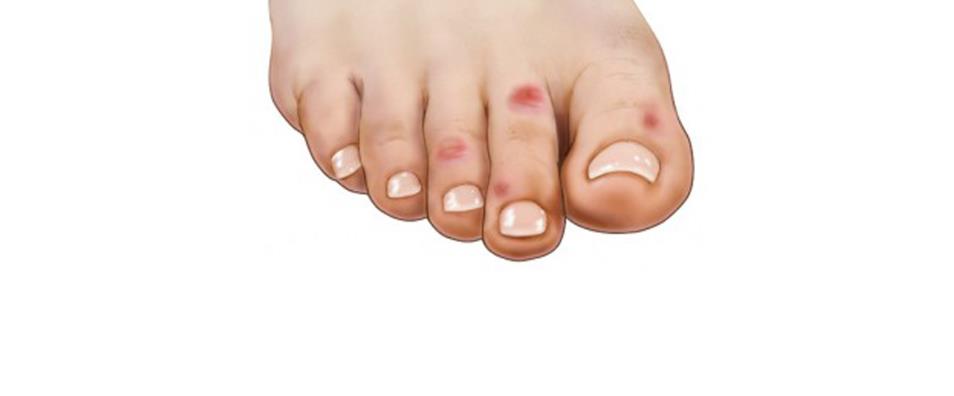Understanding Chilblains
Chilblains occur when the small blood vessels in the extremities become inflamed due to abrupt changes in temperature. This condition is often triggered by exposure to cold and damp conditions, followed by warming up too quickly. The affected skin usually appears red, swollen, and may develop blisters or ulcers in severe cases. Chilblains can be painful, itchy, and can cause a burning sensation.
1. Immediate Relief Strategies
If you have developed chilblains, it’s important to address them promptly to reduce discomfort and prevent complications. Here are several immediate relief strategies:
1.1. Gently Warm the Affected Area
Avoid direct heat sources like hot water or heating pads, as they can aggravate the condition. Instead, warm the affected area gradually. You can use a warm (not hot) water bath or apply a warm, damp cloth to the area. The goal is to restore circulation slowly without causing additional stress to the skin.
1.2. Keep the Feet Dry
Moisture can exacerbate chilblains, so it’s crucial to keep your feet dry. If your feet are wet, dry them thoroughly with a soft towel. Avoid rubbing the skin vigorously, as this can further irritate the area.
1.3. Avoid Scratching
It’s essential to resist the urge to scratch chilblains, even if they are itchy. Scratching can damage the skin and increase the risk of infection. Instead, use soothing remedies to manage itching, such as applying calamine lotion or over-the-counter anti-itch creams.
1.4. Use Over-the-Counter Treatments
Topical treatments like corticosteroid creams can help reduce inflammation and relieve itching. These creams are available over the counter and can be applied as directed. Be sure to follow the instructions and consult a healthcare professional if you have any concerns.
2. Long-Term Management and Care
In addition to immediate relief, managing chilblains involves adopting strategies to prevent future occurrences and care for the affected areas.
2.1. Gradual Rewarming
If your feet become cold, rewarm them gradually. Avoid rapid exposure to heat sources. Instead, warm your feet slowly by using layered clothing, warm socks, or heating pads set to a low temperature.
2.2. Moisturize Regularly
Keeping your skin well-moisturized can help prevent chilblains. Use a rich, emollient moisturizer to maintain skin hydration and elasticity. Apply it regularly, especially before going out in cold weather.
2.3. Improve Circulation
Encourage healthy blood flow to your extremities by engaging in regular physical activity. Exercises like walking or leg lifts can help improve circulation and reduce the risk of chilblains. Additionally, avoid sitting or standing in one position for prolonged periods.
2.4. Wear Appropriate Footwear
Proper footwear is essential for protecting your feet from the cold. Choose insulated, waterproof boots that keep your feet warm and dry. Ensure that your shoes are well-fitting to avoid constriction, which can impair circulation.
2.5. Dress in Layers
When going out in cold weather, dress in layers to help regulate your body temperature and keep your extremities warm. Wear moisture-wicking socks to keep your feet dry and add thermal socks for additional warmth.
3. When to Seek Medical Advice
While chilblains often resolve with self-care, it’s important to seek medical advice if you experience severe symptoms or complications. Consult a healthcare professional if:
3.1. Symptoms Persist or Worsen
If chilblains do not improve with home treatments or if the condition worsens, consult a doctor. Persistent symptoms may indicate a more serious underlying issue or a need for prescription medication.
3.2. Signs of Infection Develop
If you notice increased redness, swelling, pus, or significant pain, these may be signs of an infection. Prompt medical evaluation is necessary to prevent the infection from spreading.
3.3. You Have Recurrent Chilblains
If you experience frequent chilblains, discuss preventive measures and treatment options with a healthcare provider. They can provide guidance on managing the condition effectively and addressing any underlying health issues.
4. Preventing Chilblains
Preventing chilblains is key to avoiding the discomfort and pain associated with the condition. Implement these strategies to reduce your risk:
4.1. Maintain Warmth
Keep your extremities warm in cold weather by dressing appropriately. Wear gloves, hats, and warm socks to protect your hands and feet from cold exposure.
4.2. Avoid Rapid Temperature Changes
Minimize sudden changes in temperature by avoiding direct heat exposure to cold areas of your body. When coming in from the cold, warm up gradually.
4.3. Stay Active
Regular physical activity helps improve circulation and can reduce the likelihood of developing chilblains. Incorporate exercise into your daily routine to support overall vascular health.
4.4. Keep Your Home Warm and Dry
Maintain a comfortable indoor temperature and reduce humidity to create a conducive environment for avoiding chilblains. Use a humidifier if necessary to keep indoor air from becoming too dry.
Conclusion
Dealing with chilblains on the foot can be uncomfortable and distressing, but with the right strategies, relief and prevention are achievable. By implementing immediate relief measures, practicing effective long-term care, seeking medical advice when needed, and focusing on prevention, you can manage and minimize the impact of chilblains. Emphasize gradual rewarming, proper skin care, and adequate protection against cold weather to keep chilblains at bay and ensure your feet stay healthy and comfortable throughout the winter months.


